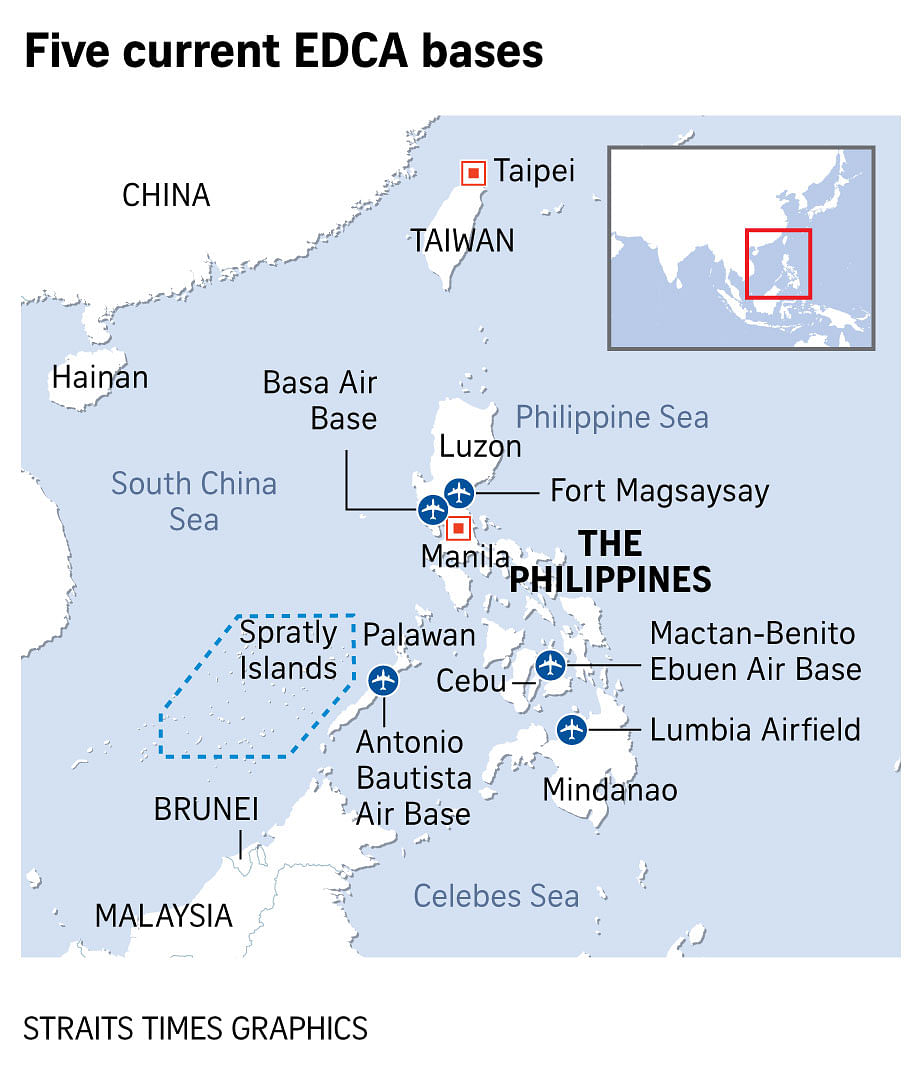MANILA - The Philippines and the United States agreed to expand the access for American troops and equipment to four more Philippine military bases amid rising tensions in the South China Sea and Taiwan’s fraught relations with Beijing.
The Philippines granted the US greater access to its military bases following the visit of US Defence Secretary Lloyd Austin, who went to Manila on Tuesday night after travelling from South Korea. He was due to leave the Philippines by Thursday evening.
Mr Austin met Philippine President Ferdinand Marcos Jr, Defence Secretary Carlito Galvez Jr and other top government officials during his three-day visit.
On Wednesday, he also visited about 100 American soldiers stationed at a military camp in Zamboanga City, in the southern Philippines. They are helping Philippine troops fight remnants of militant groups linked to the Islamic State in Iraq and Syria.
The Philippines and the US said on Thursday that they would be accelerating the full implementation of the Enhanced Defence Cooperation Agreement (EDCA) by designating four additional Philippine military bases as part of the military deal.
Signed in 2014, the EDCA allows US forces to construct facilities, bring in equipment and hold joint training exercises in mutually agreed upon bases in the Philippines.
The deal also allows the US to rotate troops into the Philippines for extended stays, but does not grant them permanent presence in the country.
With the new development, the US will now have access to a total of nine bases in the Philippines under the EDCA. The five existing EDCA sites chosen in 2016 are the Antonio Bautista Air Base in Palawan, Basa Air Base in Pampanga, Fort Magsaysay in Nueva Ecija, Lumbia Airfield in Cagayan de Oro and Mactan-Benito Ebuen Air Base in Cebu.
The US has already allocated more than US$82 million (S$107 million) for infrastructure investments at these five bases.
Most of the new bases will reportedly be located in the northern part of the Philippines, the area closest to Taiwan. One EDCA site is expected to be in Palawan, the island province closest to the disputed Spratly Islands in the South China Sea.
Having access to these sites could prove to be crucial for the US in the event of a Taiwan-China conflict or an armed attack against the Philippines in the South China Sea.
Mr Galvez refused to identify the exact locations of the four EDCA sites at present, as coordination with local officials is still ongoing.
The Philippines is one of America’s oldest treaty allies, but relations turned cold under former president Rodrigo Duterte as he sought friendlier ties with China.

Manila and Washington are now looking at a fresh start under President Marcos, who is caught in a diplomatic tug-of-war between strengthening military relations with the US and maintaining economic ties with Beijing.
Manila’s geographic location makes it a strategic ally for both superpowers, who are now competing for influence in the region.
The US and the Philippines said the four additional EDCA locations will allow for the deployment of more rapid support for humanitarian and climate-related disasters in the country.
“It is not about the US’ permanent basing in the Philippines, but it is a big deal,” said Mr Austin.
“It is really a big deal in that it provides us again with the opportunity to interact a bit more in an effective way.”
During a regular briefing in Beijing on Thursday, Chinese Foreign Ministry spokesman Mao Ning said the Philippines granting the US greater access to military bases raises tensions and hurts stability in the region.
“China has always believed that defence and security cooperation between countries should always be beneficial towards regional peace and stability, and should not be targeted towards or harm the interests of third parties,” said Ms Mao.
Mr Marcos went on a state visit to China in January, even as Beijing continued to ramp up its incursions in parts of the South China Sea that already fall within the Philippines’ exclusive economic zone (EEZ).
An international tribunal in The Hague, Netherlands, struck down in 2016 Beijing’s expansive claim over the South China Sea and asserted that the West Philippine Sea “exclusively belongs to Filipinos, and no one else”.
The West Philippine Sea is Manila’s official designation for the eastern parts of the South China Sea that fall within the country’s EEZ.


